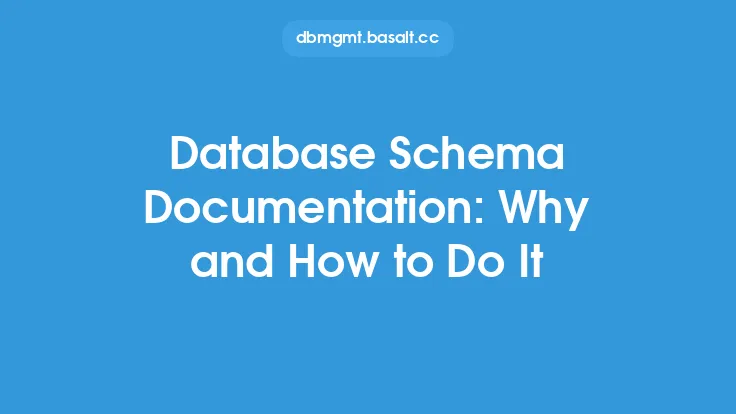Data masking is a crucial aspect of database security that involves hiding or obscuring sensitive data to prevent unauthorized access or exposure. This technique is used to protect sensitive information, such as financial data, personal identifiable information (PII), or confidential business data, from being accessed by unauthorized individuals or systems. In this article, we will delve into the concept of data masking, its importance, and how it works to provide a secure and reliable way to protect sensitive data.
Introduction to Data Masking
Data masking is a data protection technique that involves replacing sensitive data with fictional or anonymized data, making it unusable for malicious purposes. This technique is used to protect data in various environments, including production, development, and testing. The primary goal of data masking is to ensure that sensitive data is not exposed to unauthorized individuals or systems, thereby reducing the risk of data breaches and cyber attacks. Data masking can be applied to various types of data, including structured and unstructured data, and can be used in conjunction with other data protection techniques, such as encryption and access control.
How Data Masking Works
Data masking works by replacing sensitive data with masked data, which is a fictional or anonymized version of the original data. The masking process involves creating a mask, which is a set of rules or algorithms that define how the sensitive data should be replaced. The mask can be applied to specific columns or fields in a database, and can be used to replace sensitive data with fictional data, such as dummy credit card numbers or fake addresses. The masked data is then used in place of the original sensitive data, making it impossible for unauthorized individuals or systems to access the sensitive information.
Data Masking Techniques
There are several data masking techniques that can be used to protect sensitive data. These techniques include substitution, shuffling, and encryption. Substitution involves replacing sensitive data with fictional data, such as replacing a credit card number with a dummy credit card number. Shuffling involves rearranging the sensitive data, such as shuffling the digits of a credit card number. Encryption involves converting the sensitive data into an unreadable format, making it inaccessible to unauthorized individuals or systems. Each of these techniques has its own advantages and disadvantages, and the choice of technique depends on the specific use case and the level of protection required.
Data Masking and Data Privacy
Data masking is an essential technique for protecting sensitive data and ensuring data privacy. With the increasing amount of sensitive data being collected and stored, data masking has become a critical aspect of data protection. Data masking helps to prevent data breaches and cyber attacks by making it impossible for unauthorized individuals or systems to access sensitive information. Additionally, data masking helps to ensure compliance with data protection regulations, such as the General Data Protection Regulation (GDPR) and the Payment Card Industry Data Security Standard (PCI DSS). By using data masking, organizations can ensure that sensitive data is protected and that data privacy is maintained.
Data Masking and Database Security
Data masking is a critical aspect of database security, as it helps to protect sensitive data from unauthorized access or exposure. Database security involves a range of techniques, including access control, encryption, and auditing, to ensure that sensitive data is protected. Data masking is an essential part of database security, as it helps to prevent data breaches and cyber attacks by making it impossible for unauthorized individuals or systems to access sensitive information. By using data masking, organizations can ensure that sensitive data is protected and that database security is maintained.
Conclusion
In conclusion, data masking is a crucial aspect of database security that involves hiding or obscuring sensitive data to prevent unauthorized access or exposure. This technique is used to protect sensitive information, such as financial data, personal identifiable information (PII), or confidential business data, from being accessed by unauthorized individuals or systems. By using data masking, organizations can ensure that sensitive data is protected and that data privacy is maintained. Additionally, data masking helps to ensure compliance with data protection regulations and is an essential part of database security. As the amount of sensitive data being collected and stored continues to grow, data masking will become an increasingly important technique for protecting sensitive data and ensuring data privacy.





